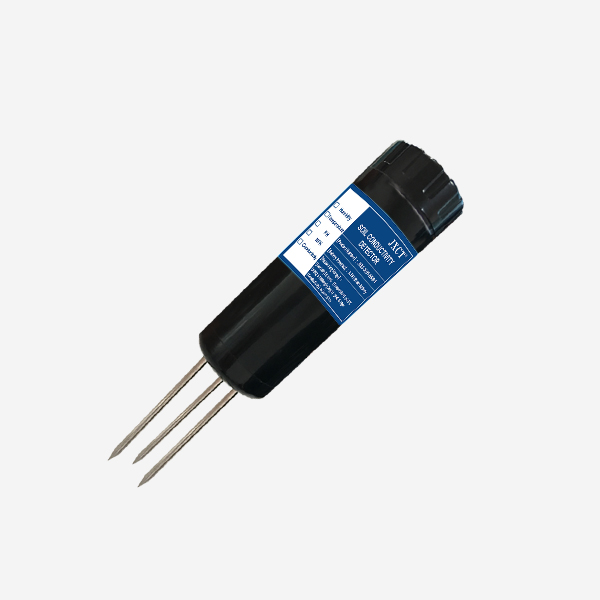Soil is a fundamental component of our ecosystem, supporting plant growth, water filtration, and nutrient cycling. Understanding its properties and dynamics is crucial for sustainable agriculture, environmental management, and land-use planning. In recent years, soil sensor technology has emerged as a powerful tool for monitoring and analyzing soil conditions. This article delves into the advancements in soil sensor technology, exploring its potential for unlocking the secrets of soil and revolutionizing various fields.

The Importance of Soil Analysis:
Soil analysis provides vital information about soil composition, nutrient content, moisture levels, and other physical and chemical properties. This knowledge is essential for optimizing agricultural practices, ensuring proper irrigation, managing soil erosion, and mitigating the impact of climate change. Traditional soil sampling and laboratory analysis methods are time-consuming and often provide only limited, sporadic data. Soil sensors offer a real-time and continuous approach to soil analysis, enabling more precise decision-making and sustainable resource management.
Soil Sensor Technology:
Soil sensors are electronic devices designed to measure and monitor various soil parameters. They utilize innovative technologies to collect data on soil moisture, temperature, pH levels, nutrient concentrations, salinity, and compaction. These sensors can be embedded directly into the soil or placed at different depths to capture a comprehensive picture of soil conditions. With advancements in sensor miniaturization, wireless communication, and data analytics, soil sensors have become more accessible, cost-effective, and reliable.
Applications of Soil Sensors:
a. Precision Agriculture: Soil sensors play a crucial role in precision agriculture by providing accurate and timely information for optimizing crop production. Farmers can use soil sensors to determine the right amount of irrigation water, assess nutrient deficiencies, and identify areas prone to soil erosion. By precisely tailoring inputs to meet the specific needs of crops, farmers can reduce water and fertilizer usage, increase yields, and minimize environmental impact.
b. Environmental Monitoring:
Soil sensors are valuable tools for monitoring environmental conditions and assessing the impact of land use on soil health. They help identify areas at risk of contamination and monitor the effectiveness of remediation efforts. Soil sensors also contribute to the evaluation of soil carbon sequestration, providing insights into climate change mitigation strategies.
c. Land Management and Planning:
Soil sensors provide essential data for land-use planning and management. By understanding soil properties, such as compaction and moisture levels, authorities can make informed decisions regarding construction projects, urban development, and natural resource management. Soil sensors aid in preserving sensitive ecosystems, optimizing land use, and preventing soil degradation.
d. Research and Scientific Studies:
Soil sensors enable scientists and researchers to gain a deeper understanding of soil processes and dynamics. Long-term data collected by these sensors helps study the effects of climate change, land management practices, and soil conservation measures. This knowledge contributes to the development of sustainable agricultural practices, ecosystem restoration, and soil conservation strategies.
Advancements in Soil Sensor Technology:
a. Multifunctionality: Modern soil sensors are capable of measuring multiple soil parameters simultaneously, reducing the need for multiple devices or sensors. This multifunctionality enhances efficiency and convenience during soil data collection.
b. Wireless Connectivity and IoT Integration:
Soil sensors now often feature wireless connectivity options, allowing for real-time data transmission and remote monitoring. Integration with the Internet of Things (IoT) facilitates data aggregation, analysis, and visualization, enabling timely decision-making and efficient resource allocation.
c. Data Analytics and Machine Learning:
The integration of data analytics and machine learning algorithms enables advanced data processing, pattern recognition, and predictive modeling. By analyzing large datasets collected by soil sensors, valuable insights can be gained about soil behavior, crop performance, and environmental factors, facilitating evidence-based decision-making.
Future Directions and Challenges:
The future of soil sensor technology holds exciting possibilities. Advancements may focus on improving sensor accuracy, durability, and energy efficiency. Integration with satellite imagery, drones, and other remote sensing technologies can provide a broader perspective on soil conditions. However, challenges like sensor calibration, data interpretation, and standardization need to be addressed for wider adoption and compatibility among different soil sensor systems.

Conclusion:
Soil sensors have revolutionized our understanding of soil dynamics and unlocked valuable insights into agricultural practices, environmental management, and land-use planning. By providing real-time and continuous measurements of soil parameters, these sensors enable precision agriculture, environmental monitoring, and scientific research. With ongoing advancements in technology and increasing awareness of sustainable resource management, soil sensors will continue to play a crucial role in unlocking the secrets of soil, promoting sustainable agriculture, and ensuring the health of our planet.
